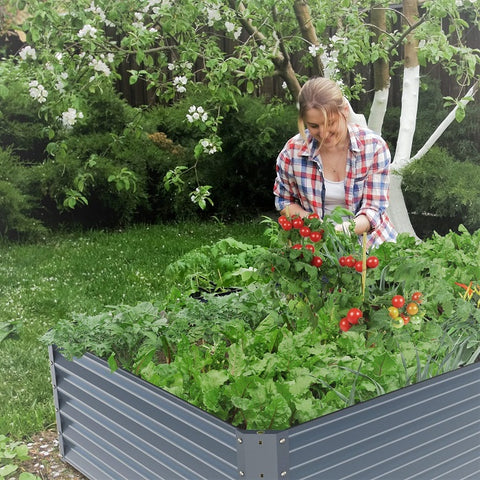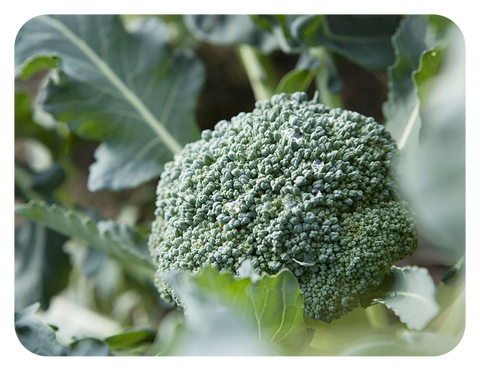Garden bed is more and more popular among people, people can plant what they like in the garden bed, but they will also encounter all kinds of problems. The following content also has some reference value for raised garden beds.
When should I start seeds for fall plants?
Now is the time to start seeds for fall crops that need a longer time to produce, like broccoli, cauliflower, cabbage, and Brussels sprouts. You can start those indoors and then transition them outdoors when temperatures start to drop to the 60s and 70s.
You can wait a few weeks to start crops that don’t take as long to mature, and sow those directly outside. These include roots like beets, turnips, radishes, and carrots, as well as greens like kale, collards, lettuce, and arugula.

How do you prune tomatoes?
Pruning tomatoes isn’t always necessary, but it can increase your harvest. Pruning only needs to be done on indeterminate tomato varieties. Indeterminate tomatoes have a main stem that continues growing from the top like a vine. You can look at plant tags or seed packets to know whether or not your tomatoes are indeterminate.
When pruning tomatoes, the goal is to remove a third tier of stems called suckers that grow between the main stem and the side stems. These can take energy away from the plant. You can remove suckers with your fingers when they’re small. If they’re larger, you may need to use hand pruners.
How to Clean Garden Tools?
It’s very important to use clean pruners when trimming tomatoes so you don’t transfer any diseases from plant to plant. Really conscientious gardeners will carry around a solution of water and bleach and sterilize their pruners between plants. Really, for many tasks in the garden, it’s important to keep your garden tools clean and sharpened. It only takes a few minutes and some basic materials to get your tools in shape.
What could be eating my green beans?
Bean plants can be damaged by a few different pests but holes in the leaves sounds like it could be cucumber beetles. They especially like to munch on young seedlings, so one of the best ways to keep them off your plants is to cover with row cover cloth until the bean plants get a little larger. If your bean crop is already too far gone, you can take up those seedlings and plant another round of beans. And this time, cover your crop from the beginning.
What’s the trick with celery?
Celery is a cool-season crop that grows best either in spring or late summer to fall. It’s difficult to sow directly in the garden and hard to find transplants, so you usually need to start it indoors. I actually did find transplants this year at my local garden center and planted these in early spring. Once it’s growing, celery is pretty trouble free as long as you give it plenty of water and fertilizer.
The stalks of garden celery are probably not going to be as thick as grocery store celery, but I think they taste a lot better. You can cut individual stalks from the outside of the plant or harvest the whole plant. When you cook with the stalks, be sure not to throw away the leafy tops — that’s where some of the best flavor is!
What are your favorite radish varieties to grow?
I love growing radishes in both spring and fall, and I find them to be one of the easiest vegetables to grow. They also taste soooo much better than radishes you get at the grocery. One of my favorite varieties is called French Breakfast radish. It’s a mild, pinky-red, oblong-shaped radish that you harvest at about 1-2 inches. Another radish I love is called Watermelon radish, and it’s green on the outside but bright pink on the inside, like a watermelon. Watermelon radishes are large and round, and you harvest them when they’re 2-3 inches in diameter.
We tried broccoli this year and we may get a small harvest, but how do you keep the pests off your broccoli leaves?
Broccoli can be a little tricky to grow, mostly because of timing and temperatures. It’s a cool season crop, so it’s best grown in spring and fall, but it doesn’t do well if the temperatures stay below 40 or above 80 degrees for very long. Where I live in zone 7, I’ve had the best luck in spring.

Like most plants in the cabbage family, broccoli can have a lot of issues with insect pests, especially cabbage worms. You can help deter cabbage moths that become cabbage worms by planting fragrant herbs like thyme and chamomile near your broccoli. If you still have issues, you can use an organic insecticide called Bt that focuses on worms and caterpillars. Just be sure to apply according to the directions.
What is a cover crop and is that something I need to plant in my garden this fall to get ready for next spring?
A cover crop is something that’s grown in times when you’re not growing something for harvest, rather than leaving the ground bare. Cover crops can act like a living mulch to shade the soil, they can add nitrogen and other nutrients to soil, and they can prevent erosion. They’re not totally necessary, especially for a small garden. But if you want to try cover crops, a few common ones to look into are clover, buckwheat and annual rye. There are also a few cover crops that can be grown to harvest, including mustard and daikon radish, which helps to loosen the soil. Those are the ones I’d most recommend.
Ideas for Gardening Through Winter in Cold Climate
I've seen a lot of questions lately about how to continue growing through winter and, in general, how to grow in cold climates. While I don't have a lot of experience gardening in cold regions, my friend and Canadian garden book author Niki Jabbour does. Her new book, Growing Under Cover, offers ideas for using row covers, hoop houses and even common household items like buckets, plastic jugs and dropcloth to extend the season. The book releases December 22, but you can pre-order yours now.
What to Plant Now for Fall
Fall is just around the corner and I am so excited — it’s my favorite time of year. There are a few things you can start planting now outdoors. Root crops like carrots, beets, turnips and radishes can be sown now. You can also start greens like kale and collards from seed. I’m starting a few things indoors first, including broccoli and Brussels sprouts — these will grow for several weeks indoors before being planted in beds outside.
Any tips on how much heat and sun exposure squash and eggplant should get?
Squash and eggplant both need a lot of sunlight, at least six hours of full sun daily. Eggplant really likes sun and heat and grows well in hot climates. If you want to grow eggplant but live in a milder area, one trick is to grow it in a large black container — the container will absorb heat and make your soil temperature up to 10 degrees higher, which eggplant will love.









